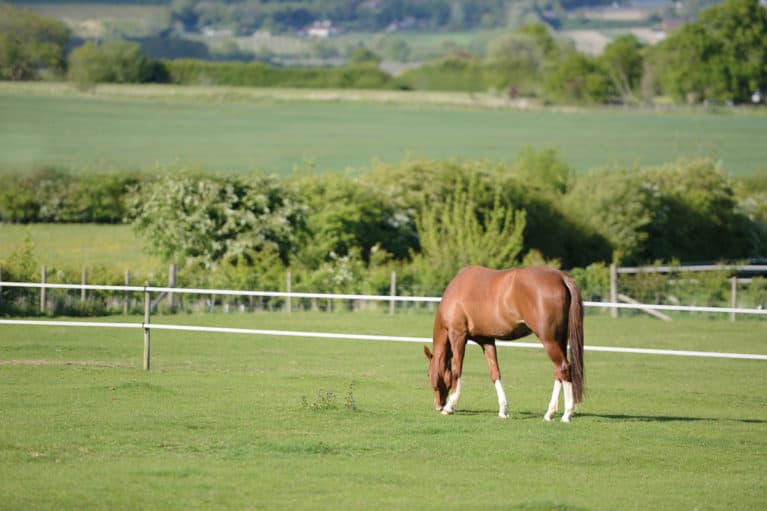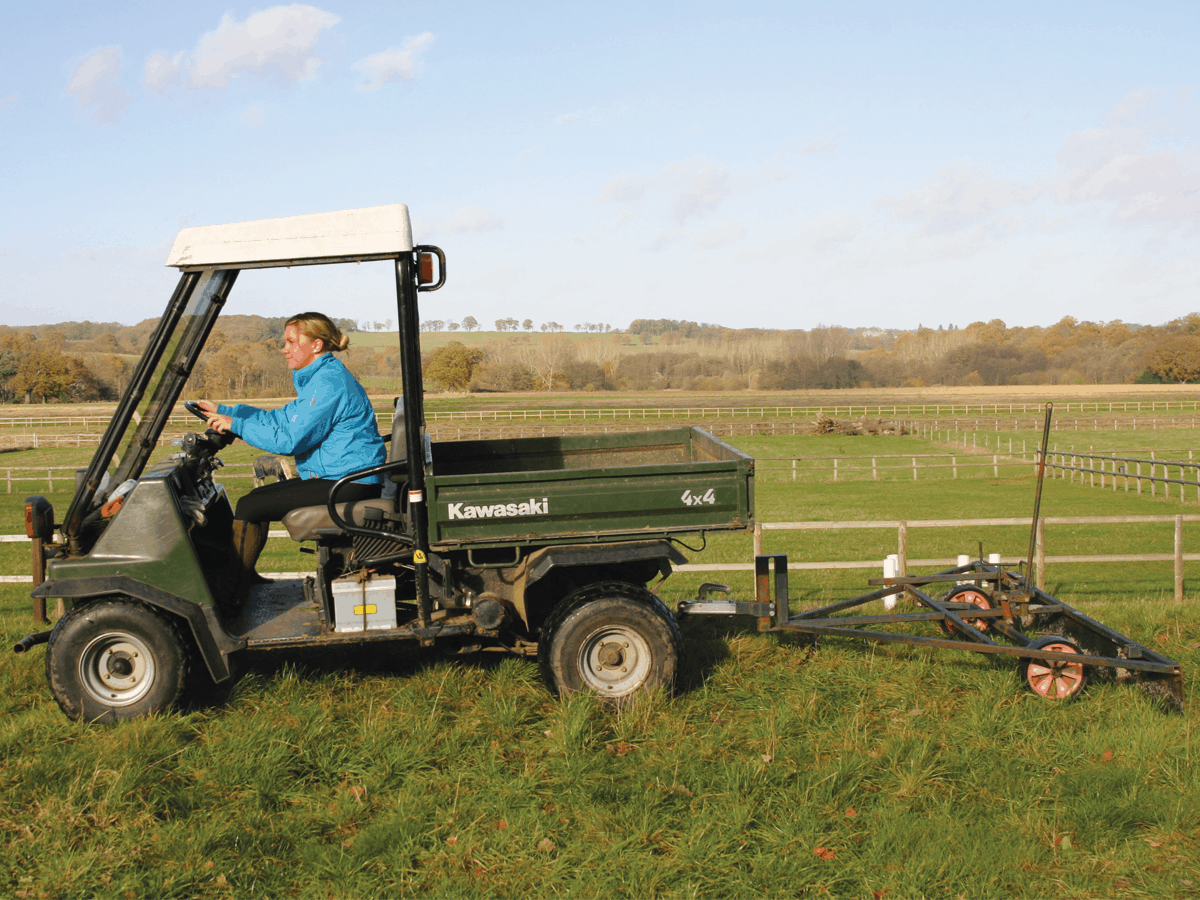Is your horse’s field looking more lacklustre than lush? Check out H&R’s simple solutions to bring it back to its best

It’s likely that your horse spends a significant amount of his time turned out. While this is great for his health and wellbeing, it can put significant pressure on your fields and they’ll require regular maintenance to keep them in tip-top condition. Luckily, these jobs can be spread across the year, so they don’t have to feel too overwhelming.
The field gateway gets really muddy when it rains
How to fix it… Gateways see a lot of footfall, particularly if multiple horses are going in and out several times a day. This not only makes the ground muddy, but also compacts it, which limits grass growth and prevents water from draining. Grass mats can provide stability to gateways and other high-traffic areas, such as walkways and around water troughs. Made of thick rubber mesh, they work by spreading your horse’s weight, meaning he does less damage to the ground.
When to do it… Install your mats in spring so the grass can grow up through the holes. This helps to anchor the mats and stops them slipping.
TOP TIP
If the ground needs extra protection, add some mesh underlay beneath your grass mats.
The ground is rutted and covered in weeds
How to fix it… Harrowing paddocks will remove dead grass and weeds, and help to level uneven ground. This encourages new grass to grow. Follow harrowing with rolling if the ground is particularly rutted. You can buy harrows that attach to the tow bar of your car or quad bike, or speak to a local farmer who may be happy to help.
When to do it… Harrowing should be done in the spring, but not when conditions are wet or muddy because your towing vehicle’s wheels will damage the grass. Rolling when the ground is wet will also compact the soil, making it difficult for grass to grow.
DID YOU KNOW?
Harrows were originally designed to be pulled behind a horse, and work best at a walking speed.
My field has lots of bare patches of ground
How to fix it… There are seed mixes available that are specially designed for horse pasture, usually containing a mix of meadow grasses and herbs. You can spread these on the bare patches or, if the paddock is particularly bad, to the whole area. Follow the instructions on the seed packaging for the best results, then fence off the reseeded areas so the grass can grow undisturbed by hungry equines.
When to do it… Reseeding should be done between spring and summer, when the conditions are optimal for grass growth. Don’t allow your horse to graze the area until the new grass is at least 15cm high so the roots have time to establish.
TOP TIPS
If your grass needs a boost, consider a fertiliser treatment in spring. Make sure you choose one that’s intended for horse pasture, as some nitrogen-based fertilisers can make the grass too rich, and check how long you need to leave it before turning your horse out on the grass again.
If you’re unsure what seed mix to choose, ask a grassland or pasture management specialist for advice.
Run rabbit
If your paddock is home to a colony of rabbits, bare patches will develop as they eat the grass down and use certain areas as latrines. They’ll also dig holes. Either contact a pest control company or investigate installing rabbit-proof fencing around the edges of your paddock.
I’ve moved to a new yard and there’s lots of ragwort
How to fix it… Ragwort is very poisonous and can spread rapidly if left unchecked. To remove it effectively, invest in a tool designed to dig it up by the roots, which will prevent regrowth. Remove all of the plant – wilted ragwort is very palatable for horses, but still just as poisonous – and seal it in a tough bag such as an old feed sack. Ragwort disposal is tricky, so speak to your local council about your options, which may include burning it.
DID YOU KNOW?
Ragwort is biennial, meaning it appears in rosette-form in its first growing season, then flowers in the second year before dying off.
When to do it… Ragwort needs digging up in spring and early summer, before it has a chance to spread its seeds. Look for rosette-shaped plants with jagged green leaves and, in the summer, tall stems with yellow flowers.
TOP TIP
Ragwort is toxic, so always wear gloves when handling it.
My field is too large for me to manage
How to fix it… As well as controlling your horse’s grass intake, dividing your field into separate paddocks allows areas to rest and the grass to regrow. Electric fencing with plastic posts is the easiest option for dividing up your field because it’s cost-effective, quick to erect and easy to move. You can power it using the mains, a car or leisure battery, or a solar charger.
When to do it… Rotate your grazing throughout the year to enable you to carry out jobs such as harrowing, reseeding and fertilising in the ungrazed areas, while your horse is still able to enjoy turnout.
My horse’s field doesn’t offer any natural shelter
How to fix it… A thick, tall hedge can provide shelter from the elements. If you want to plant one, look for fast-growing native species such as quickthorn, hazel or hornbeam. There are hedging companies that can supply the right mix of plants and help you calculate how many you’ll need. Combine your hedge with a post and rail fence to provide extra security, as some horses will push through hedges, particularly while they’re still establishing. Your growing hedge will need to be protected with tree guards and fenced off so your horse can’t reach it.
When to do it… Plant your hedge in late autumn or winter, provided the ground isn’t frozen or waterlogged.
TOP TIP
As well as being a boundary, hedges can also provide a natural habitat for species including birds and insects, and offer your horse the chance to forage naturally.









